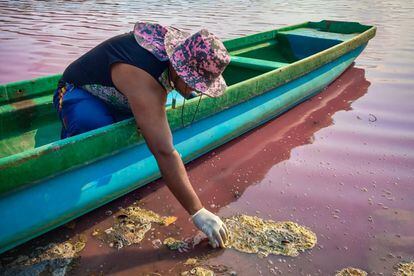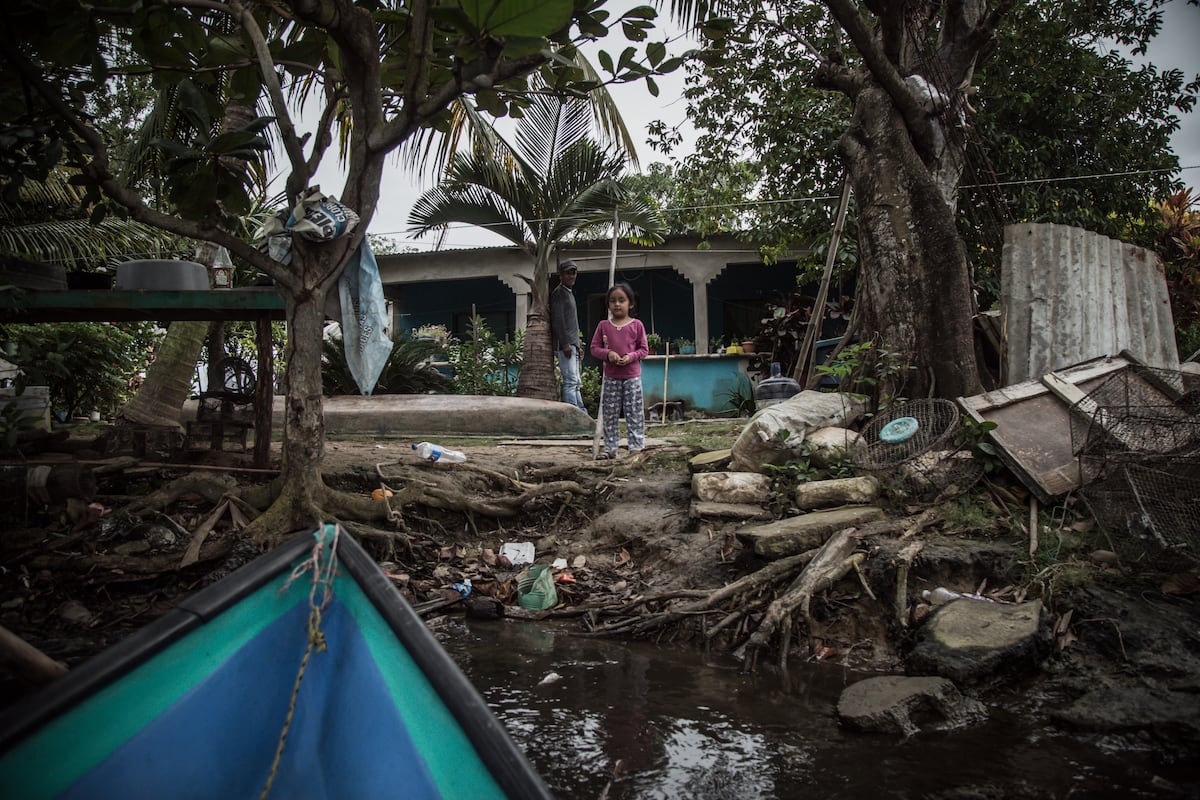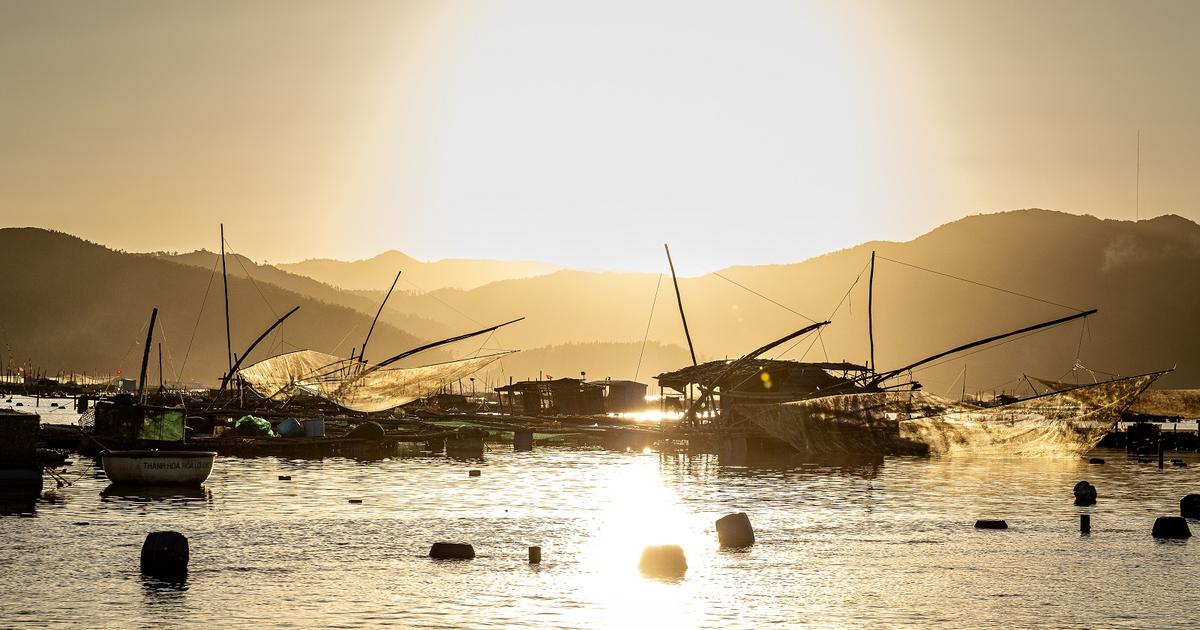The Escobilla lagoon, on the coast of Oaxaca, began to behave strangely a couple of years ago.
Snook and snapper swam disoriented.
Out of sheer daze, the people of the community only had to put their hands in the water to catch them.
Then, swollen mojarras and popoyotes with a strong smell of sulfur appeared on the shore.
The biggest surprise was yet to come.
At the beginning of May, the population had to rub their eyes: the color of the water had turned pink.
Like every morning, Hericel Ramírez went for a run and went to the lagoon, some 40 hectares of water separated from the sea by a barrier of sand.
Upon arrival, he was stunned.
"Oh, but why is he like this?"
He couldn't believe it.
He put his hands in the water in fear and saw that it was warmer than usual.
He didn't want to taste it.
He thought someone might have dumped toxic material.
“The lagoon had never taken on a pink pigmentation,” explains this 28-year-old, who normally works as a guide at a nearby sea turtle sanctuary, over the phone.
"I took some videos to get the attention of the specialists," he says.
Quickly, biologists and students from the Universidad del Mar (UMAR), located in Puerto Escondido, arrived at La Escobilla, a community made up of two dozen houses scattered between the road and the waves.
They took samples and submitted them for laboratory analysis.
The first results ruled out that the color had something to do with a toxic spill, but the concern has not disappeared.
While dozens of onlookers travel to the place to take a photo, scientists warn that the pink color is a sign that something is wrong with the ecosystems in the area.
Drought and lack of rainfall encourage the production of pigments from bacteria and microalgae, responsible for color.
A biology student from UMAR collects water samples from the lagoon.UMAR
The phenomenon is known.
La Escobilla is the third coastal lagoon in the area that has been dyed pink in the last six years.
In 2016, it occurred in Coyula, part of a protected wetland area, and in 2019, in Manialtepec.
When it happened the first time, some people wanted to see biblical echoes in the strange event.
Biologist Eugenio Villanueva, a member of the Huatulco Clean Beaches Committee, had to go out and clear up any doubts.
“We try to explain that this is a very beautiful phenomenon, but that it really means pollution and ecological stress,” he says.
“It is still a surprise to everyone that this is happening, although in the environmental sector we immediately knew what it was about.”
The underlying problem is drought.
The rainy season has shortened and precipitation falls more spaced.
Some of the rivers that feed the coastal lagoons have become temporary or have dried up.
The Mexican government's drought monitor has painted the entire Oaxacan coast yellow for going through an "abnormally dry" period.
Only the Yucatan Peninsula, Tabasco and small redoubts throughout the country remain outside the threat.
Hericel Ramírez recounts that in his father's time the La Escobilla lagoon was 10 meters deep.
Now, during the year it barely reaches a meter and a half, and five, in the rainy season.
"Of
about five years here, there is very little rain.
It rains three days and then a month and a half goes by before it falls again,” explains Ramírez.
Being below the level of the lagoon, the bocabarra does not open to the sea in the autumn months, as it used to happen, and the water is not renewed.
Added to the lack of rainfall are the high temperatures that cause greater evaporation and increase salinity.
"There is more water coming out of steam than coming in through rivers or the sea," explains biologist Nieves Trujillo, who teaches at UMAR and has studied the phenomenon since it first appeared in 2016. "That makes the concentration of salt is higher, around 45 salinity units.
It's a lot.
The normal is 30 at sea”.
As salinity increases, the microalgae present in the lagoon activate a kind of defense mechanism and begin to produce an orange pigment.
Over time, the microalgae are crowded out by halophilic bacteria that like high salt concentration and, in turn, produce a red pigment.
Under certain extreme conditions such as those of La Escobilla, the color can end up staining the entire lagoon, which appears pink on its surface.
"The concentration of salt and the intensity of light causes these microorganisms to become stressed and react in this way," says Trujillo.
Along the way, the fish die due to the low oxygenation of the water, also a consequence of the high salinity.
The crocodiles simply change their diet;
instead of fish, they eat carrion.
However, the storks or roseate spoonbills that fly over the area stop stopping at the lagoon because there is no longer anything to hunt.
The fishermen of La Escobilla, for their part, have to go out to the open sea.
“The lagoon fed the community, but there has been no fishing for two years.
The few fish that were there were captured and the rest died," says Hericel Ramírez.
The tourist boom in this area of Oaxaca, fostered by the existence of two international airports just 100 kilometers away, increasingly demands more resources.
The road that runs along the coast and past La Escobilla is being widened, another obstacle to the rivers that bring fresh water to the coastal lagoons.
In addition, the owners of the land bordering the riverbeds extract stone material to use in construction.
“The systems are degrading at great speed,” says Villanueva.
"To restore the lagoon, it would be necessary to remove the silt, to ensure that the channels for the entry of fresh water are clean."
However, addressing low rainfall and rising temperatures, the two roots of the problem, is beyond the control of any well-meaning biologist.
The risk is that, as happened in Coyula, the La Escobilla lagoon ends up drying up completely and that the cases will repeat themselves in the coming years.
"I wish the mouth of the bar would be opened so that the sea water could nourish that lagoon," says Trujillo.
"If we have a year of drought, these phenomena will last longer or become permanent."
Meanwhile, the community of La Escobilla is determined to put a brave face on bad weather.
The lagoon has run out of fish, but it sports a resplendent pink that already attracts local and international tourists.
The word has spread and they go to check if what is said on social networks is true and to take a photo.
To take advantage of this sudden interest, the town's festival committee has begun to control access and ask for voluntary contributions from visitors.
It is not yet nesting season for sea turtles, and the pink lagoon opens up an additional source of income.
No one knows how long the phenomenon will last.
Biologists maintain that the color will gradually fade when the rains begin.
The first shower fell the other day, but the pink remains.
The community prays that it last a little longer.
Just in case, Hericel Ramírez walks to the lagoon every morning to make sure.
"If it goes back to its natural state, it's not going to be an attraction and there aren't any fish that are edible to fish anymore," he says.
"The only thing is to take advantage of the arrival of tourists."
Aerial view of La Escobilla lagoon.UMAR
subscribe here
to the
newsletter
of EL PAÍS México and receive all the informative keys of the current affairs of this country








